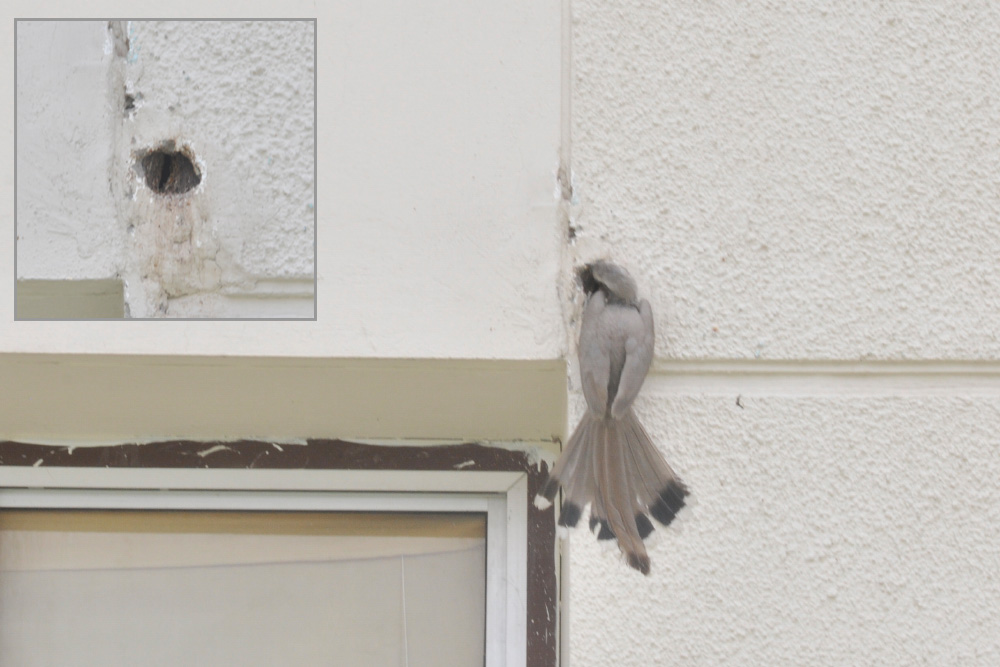 "
"
In the middle of the city of Indore, an Indian grey hornbill pair has made its nest in a hole (cavity) on the 2nd floor of a multi storied building. Till now it is known that hornbills make nests in cavities of large trees, but this peculiar nesting behaviour has amazed the birder fraternity.
I was informed by a fellow birder that a hornbill was being seen near a building very frequently in the mornings and evenings. I immediately figured that a hornbill pair must be nesting nearby as it was the breeding season. On reaching the building, I was amazed to see the kind of place the pair had chosen for making the nest, which was in a hole in the wall, beside a window, of around 3 inches diameter and 20 feet from the ground. The hole was properly sealed by the female hornbill, leaving only a small slit. I observed the nest regularly for about 10 days and surmised that the nest might have been occupied for one and half months. I was able to hear calls made by the chicks in demand for food, as and when the male hornbill comes to feed the female and them.
The nest is located beside a big playground which is almost fully occupied by players in the mornings and evenings, so it’s amazing to see how the male hornbill manages to feed the female and chicks while taking utmost care that he should not be spotted near the nest cavity.
While this proves the adaptability of the hornbill pair, it indicates an even greater need to protect existing big and old trees, which are traditionally used by hornbills and other cavity breeders for nesting.
A couple of years ago, I noticed that with changing times these birds are being forced to change their food habits, with rotis (Indian bread) and biscuits becoming part of their diet.
I find that the big trees inside the Indore zoo are still the best places to see hornbills and their nests, and to study their behaviour. This year four nests were located by me, in which the hornbills are successfully raising their chicks.

 CI is a non-profit, non-commercial portal that aims to facilitate wildlife and nature conservation by providing reliable information and the tools needed to campaign effectively.
CI is a non-profit, non-commercial portal that aims to facilitate wildlife and nature conservation by providing reliable information and the tools needed to campaign effectively.
Chosen as 'Picture of the Week'
While this proves the adaptability of the hornbill pair, it indicates an even greater need to protect existing big and old trees, which are traditionally used by hornbills and other cavity breeders for nesting.